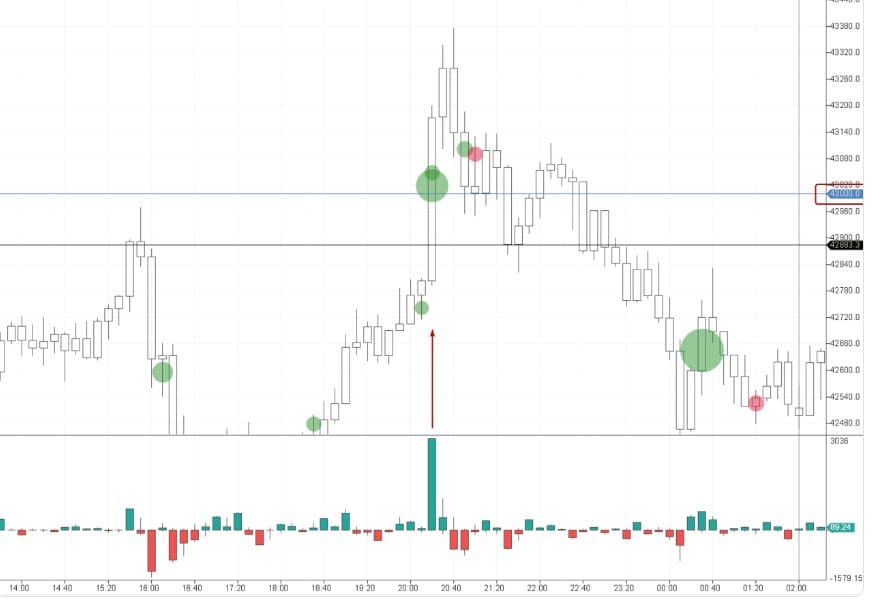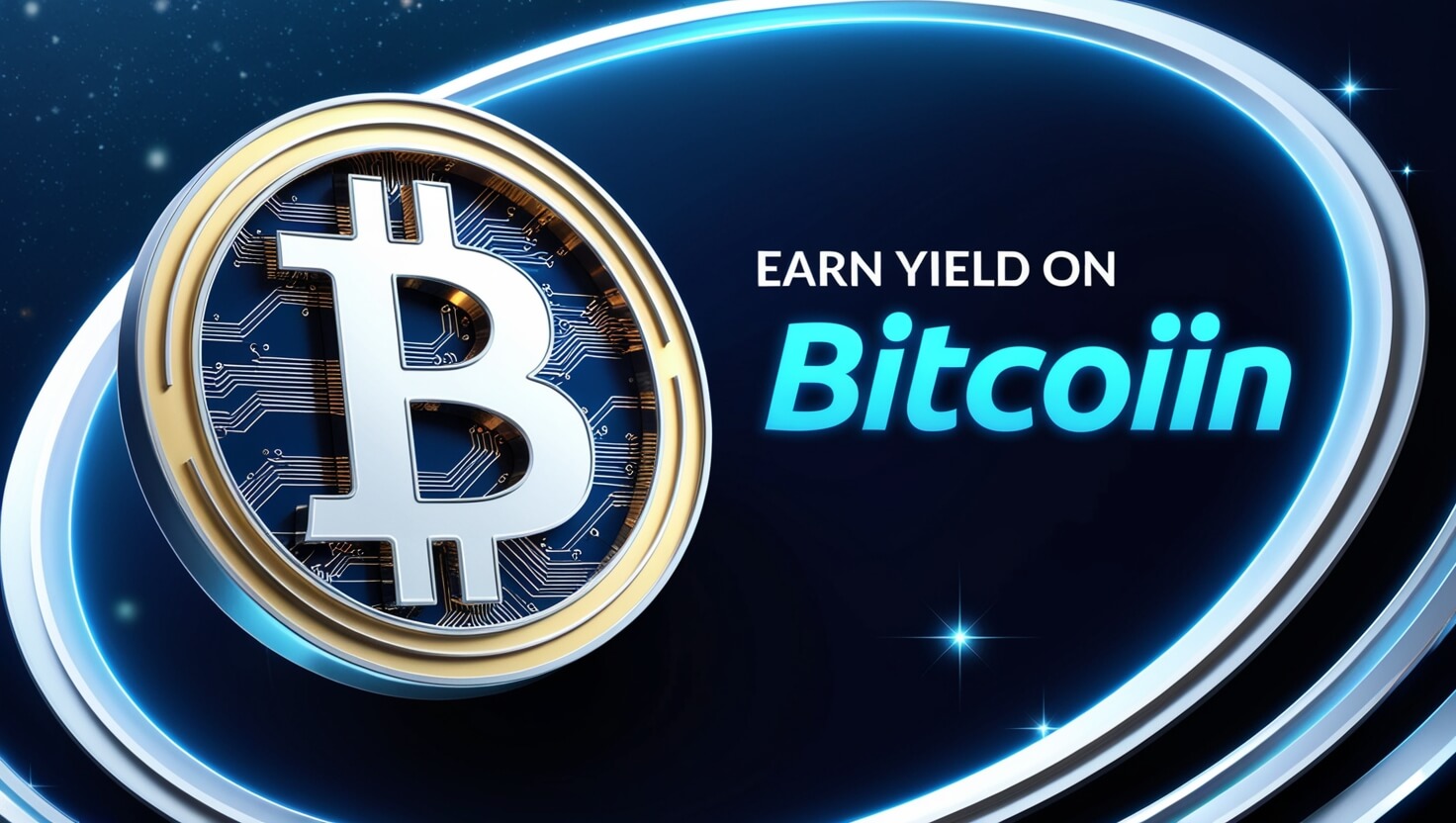In this post, I will explain how to earn yield on Bitcoin along with the different strategies that are available for Bitcoin investors.
These options include lending platforms, DeFi protocols, and even staking tokenized Bitcoin which can all turn any investment into passive income. In this case, let’s examine the possible solutions and their associated dangers.
How to Earn Yield on Bitcoin?
Yielding Bitcoin pays off because you are able to grow your assets beyond the simple appreciation of your investment. Here are several methods you can use:
1. Lending Bitcoin to Earn Interest
One effective strategy is lending your Bitcoin to reputable platforms that offer interest on crypto deposits. These platforms connect lenders with borrowers, facilitating transactions that generate interest.
Platform Example: Nexo

Nexo is a centralized platform that allows users to earn interest on their Bitcoin holdings. By depositing Bitcoin into a Nexo account, users can earn interest, with rates varying based on market conditions and the specific terms of the deposit.
How It Works:
Deposit Bitcoin: Transfer your Bitcoin to your Nexo account.
Earn Interest: Nexo lends your Bitcoin to institutional borrowers and pays you a portion of the interest earned.
Withdraw Earnings: Interest is typically paid out daily, allowing for flexible access to your earnings.
Benefits:
Passive Income: Earn interest without actively trading.
Security: Nexo employs robust security measures to protect user assets.
Flexibility: Access to funds with minimal withdrawal restrictions.
Considerations:
- Platform Risk: Ensure the platform’s credibility and security measures.
- Interest Rates: Rates can fluctuate based on market conditions.
- Regulatory Environment: Be aware of the legal landscape regarding crypto lending in your jurisdiction.
2. Liquidity Providing

As a liquidity provider at a decentralized exchange or DEX, you earn a fraction of the transaction fees. This usually starts by wrapping your BTC into WBTC, then uploading it into liquidity pools at SushiSwap. In simple terms, your WBTC would be used in trading activities and you will earn a share of the fees generated from the trades.
3. Yield Farming Participation

This revolves around placing your investment in different decentralized finance or DeFi protocols to earn returns. For example, strategies like Contango Arbitrage and Spot-Perpetual Funding Rate Arbitrage are offered by Multipli, in an attempt to yield on Bitcoin holdings. These methods seek to exploit the difference between the prices in the spot and futures markets or the gap in funding rate, respectively.
4. Staking Bitcoin
Although Bitcoin does not utilize a native form of staking, innovative protocols like Babylon and Acre make it possible to stake indirectly through alternative means that actively contribute to the network’s security. These protocols have the potential to enable holders of Bitcoin to reap the benefits of staking.

Staking Bitcoin Earn Yield Legal Compliance: What You Should Know First
Strategic Risk Taking: All strategies pose essential risks, from high market exposure to weak platform security to Ponzi schemes. Make sure to have a strong grasp of the risks before allocating your assets.
Fraud Risk Selection: It is recommended to use platforms that are known to have been breach free in the past as thy could be weak for your security.
Tax Jurisdiction: What legal control do you have on claiming your yield from bitcoin? Does it put you any tax or legal risk? Relatively low chances to get into trouble, provided you comply with law where you are based.
Factors to Consider Before Earning Yield on Bitcoin
Yielding on Bitcoin can be an appealing way to boost return on investment. However, there are a number of aspects that should be understood in detail before venturing into yield generating activities.
1. Market Volatility
Everyone is aware of the extreme volatility in the price of Bitcoin. Such drastic price changes can affect the total value of your cryptocurrency investments, as well as the results you get from yield generating strategies. Figure out on how much you are willing to lose in the market and know that you must be ready to lose a lot due to high volatility.
2. Security Risks
Utilizing the platforms that provide yield on Bitcoin opens the gates of security hazards of your investments. You could fall prey to hacking, fraud, and various cyberattacks which may lead to asset inflation.
Make sure to check for the security protocols in place before using a particular platform, and always prefer hardware wallets to keep your Bitcoins safe.
3. Regulatory Environment
Every country handles cryptocurrencies in a different manner. In addition, such regulations can change over time. New rules can bring a challenge to the legality of yield generating activities, as well as impose new taxes. Research the active laws in your area so that you remain compliant and steer clear from legal consequences.
4. Platform Reliability
Different platforms have different levels of reliability on yielding Bitcoin, and not all of them can be trusted. Some can be quite opaque or dishonest, making it hard to determine if their platform is safe to use as they could have a record of security issues.
Evaluate the platforms reputation, user ratings, and security protocols before allocating your resources commits their assets.
5. Interest Rate Variability
Different times can find these platforms offering varying rates and having them altered as time progresses. This can also mean that higher value rates are more likely to be available at a greater risk. Make sure to comprehend how those rates are actually formulated and decide on the reasonableness of the risk.
6. Asset Liquidity
Some strategies for generating yields can be overly aggressive and may include Taking away the access of your Bitcoin for specified durations of time. Consider what makes you most comfortable and ensure that your expectations are not in contradiction to the reality of the designed plan.
7. Tax Implications
Earning yield on Bitcoin can be fully or partially taxable depending on your particular jurisdiction. Where, and if, taxes may need to be paid is upon selling the assets where there is expected capital gains tax and interest income. Understand how all these factors intertwine with your lifestyle through the analysis of a tax specialist.
Risks of Earning Yield on Bitcoin
Earning yield on Bitcoin offers flexible opportunities, however, this approach has its drawbacks which requires thorough consideration. Here are the pointers that require focus before investing any assets:
Risk of the Platform
Centralized Platforms: When using services that are on the centralized platforms, your Bitcoin will be with the platform. In the case of the platform defaulting, getting hacked, or facing regulatory scrutiny, you may risk losing your funds.
Decentralized Platforms (DeFi): While these kinds of platforms give you greater control of your assets, they may also expose you to poorly written smart contracts or the entire platform collapsing.
Volatility of the Market
You can expect high volatility for both Bitcoin and cryptocurrency. If the price of Bitcoin drops unexpectedly, your assets may depreciate greatly, and ultimately impact the profits you earn or how easily you can access your funds.
Risk Smart Contract (DeFi)
Smart contracts are essential for managing the great majority of the lending and borrowing on DeFi platforms. If a contract has bugs or if it becomes compromised by a malicious entity, then users will lose the funds with no way of getting them back.
Counterparty Risk
Using peer-to-peer lending or any central lending sites exposes you to counterparty risk. If the borrower does not repay or defaults completely, your Bitcoin is at risk for being lost.
Regulatory Risk
As with any new market, the landscape for electronic currency is ever-changing. Individual regulations, actions, or policies set forth by the government might impact your potential to earn yield or withdraw funds. Legal frameworks may require platforms to freeze accounts and/or interest payments which could lead to increased account closures.
Liquidity Risk
Certain lending pools or an interest-bearing account may have lock-in periods that restrict withdrawals at certain times. This can pose dire liquidity problems if you need funds from Bitcoin in a timely manner.
Hack and Security Risks
All centralized and decentralized Cryptocurrency exchanges and platforms have a chance of falling victim to hackers. In the event that a platform is breached, you stand to lose your Bitcoin deposits and the accrued interest.
Interest Rate Fluctuations
The interest on your Bitcoin will highly depend on the rate of interest for borrowing, how well the market is doing, and the platform’s internal policies. Because these parameters are ever changing, expected earnings are volatile as well which in turn affects profit yield.
Custodial Risk
Relying on custodial services of a third party for your Bitcoin assets means trusting that particular service. In case the platform goes bankrupt, or suffers a hack, you will lose your money, and retrieving it may prove difficult, if not impossible.
Inflation and Yield Erosion
The returns that one gets from Bitcoins can sometimes be lower than the inflation, meaning that the value of the returns can decrease over time, especially if an economic recession occurs or the interest rates on the platforms drop.
Conclusion
When it comes to Earning Yield, Bitcoin has plenty of opportunities to make more money than mere appreciation. There’s the option to lend, provide liquidity, or even engage in decentralized finance (DeFi) activities that can earn you passive income while simultaneously contributing to the broader crypto ecosystem.
But consider this: there is a myriad of risk factors to market volatility, securities, and regulations. Approach with caution. Doing proper background checks and purchasing from reputable sources are vital first steps if you want to be safe with your investments. Considering all these factors will allow you to effectively leverage your Bitcoin assets and achieve your financial objectives.










